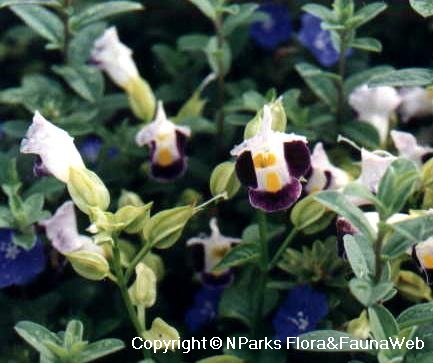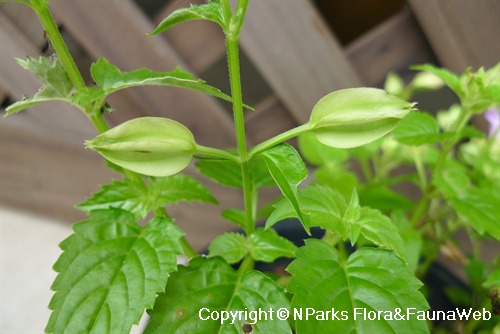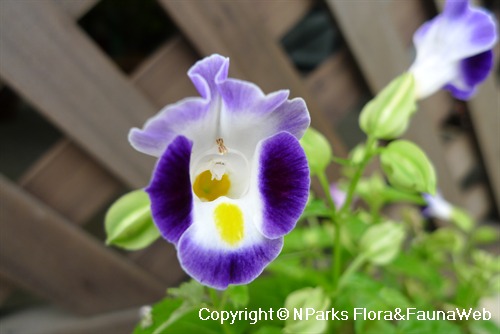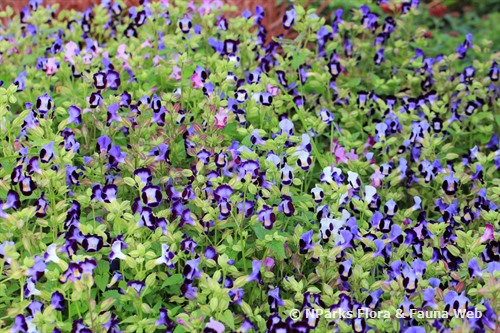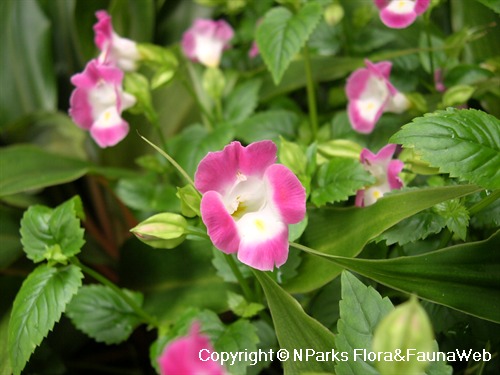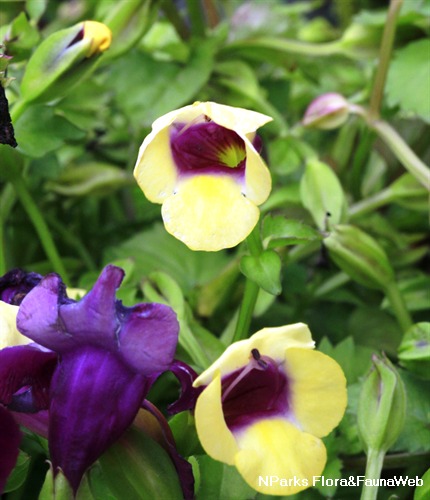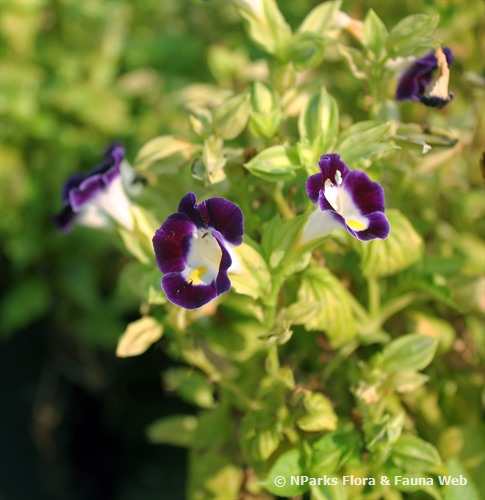
Name
Classifications and Characteristics
| Plant Division | Angiosperms (Flowering Seed Plants) (Dicotyledon) |
|---|---|
| Plant Growth Form | Creeper, Herbaceous Plant |
| Lifespan (in Singapore) | Annual, Semi-Annual / Annual-Like |
| Mode of Nutrition | Autotrophic |
| Maximum Height | 0.2 m to 0.4 m |
| Maximum Plant Spread / Crown Width | 0.2 m to 0.4 m |
Biogeography
| Native Distribution | Asia |
|---|---|
| Native Habitat | Terrestrial |
| Preferred Climate Zone | Sub-Tropical / Monsoonal |
| Local Conservation Status | Non-native (Spontaneous (Casual)) |
Description and Ethnobotany
| Growth Form | It is an annual herbaceous plant that can grow between 15 to 30 cm tall and has a dense, bushy crown shape. The stamens unite at the anthers in the shape which resembles chicken wishbone, hence the common name. |
|---|---|
| Foliage | Leaves are light green, ovate shaped, have serrated (toothed) margin, 2-5cm x 1.5-2.5cm, and are slightly hairy. |
| Stems | The stems are glabrous (no hairs). |
| Flowers | Flowers are borne on terminal clusters above the foliage. They are trumpet shaped, with partially-fused petals. The top 2 petals are completely fused, and are a lighter blue, with the colour intensifying at the apex of the petal. The bottom 3 petals are partially fused, and are darker coloured (dark purple/purplish-blue). The bottom petal forms a "tongue" with a small yellow spot. The 2 stamens are initially fused at the anthers, which makes them resemble a wishbone, hence the common name. The stamens separate when the flower is ready to be pollinated. The calyx has a distinctive fluted shape which resembles a tiny carambola or starfruit. |
| Cultivation | These plants enjoys being in consistently moist and well-drained soils, from partly shaded to fully shaded conditions. Pinch the stem tips to promote bushiness. |
| Etymology | The genus Torenia is named after Reverend Olof Toren, an 18th century chaplain in India, Surat and China to the Swedish East India Company. |
Landscaping Features
| Landscaping | It can be an excellent plant suitable for borders, beds, as well as container planting. Plant them closely together about 15 cm apart for best effect. |
|---|---|
| Desirable Plant Features | Ornamental Flowers |
| Landscape Uses | Container Planting, General, Flowerbed / Border, Suitable for Hanging Baskets |
Fauna, Pollination and Dispersal
| Pollination Method(s) | Biotic (Fauna) |
|---|
Plant Care and Propagation
| Light Preference | Semi-Shade, Full Sun |
|---|---|
| Water Preference | Moderate Water |
| Plant Growth Rate | Fast |
| Rootzone Tolerance | Fertile Loamy Soils, Moist Soils, Well-Drained Soils |
| Fertilizing | Provide fertilizer high in potassium to promote flowering. |
| Propagation Method | Seed, Stem Cutting |
| Propagation Method Remarks | If growing from seeds, take care to sow them in trays as they are very fine, and do not cover them as they require light to germinate. |
Foliar
| Foliage Retention | Evergreen |
|---|---|
| Mature Foliage Colour(s) | Green, Green - Light Green |
| Prominent Young Flush Colour(s) | Green - Light Green |
| Foliar Type | Simple / Unifoliate |
| Foliar Arrangement Along Stem | Opposite |
| Foliar Attachment to Stem | Petiolate |
| Foliar Shape(s) | Non-Palm Foliage (Ovate) |
| Foliar Venation | Pinnate / Net |
| Foliar Margin | Serrate / Toothed |
| Leaf Area Index (LAI) for Green Plot Ratio | 4.5 (Shrub & Groundcover - Dicot) |
Floral (Angiosperm)
| Flower & Plant Sexuality | Bisexual Flowers |
| Flower Colour(s) | Purple |
|---|---|
| Flower Texture(s) | Smooth |
| Flower Grouping | Cluster / Inflorescence |
| Flower Location | Terminal |
| Flower Symmetry | Bilateral |
| Flowering Period | Free-Flowering |
Image Repository
Others
| Master ID | 1223 |
|---|---|
| Species ID | 2516 |
| Flora Disclaimer | The information in this website has been compiled from reliable sources, such as reference works on medicinal plants. It is not a substitute for medical advice or treatment and NParks does not purport to provide any medical advice. Readers should always consult his/her physician before using or consuming a plant for medicinal purposes. |

